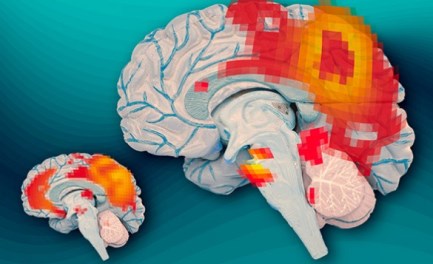Can brain scans identify ADHD and help predict treatment response?
Inside the adult ADHD brain (MIT News):
“About 11 percent of school-age children in the United States have been diagnosed with attention deficit hyperactivity disorder (ADHD). While many of these children eventually “outgrow” the disorder, some carry their difficulties into adulthood: About 10 million American adults are currently diagnosed with ADHD…“The psychiatric guidelines for whether a person’s ADHD is persistent or remitted are based on lots of clinical studies and impressions. This new study suggests that there is a real biological boundary between those two sets of patients,” says MIT’s John Gabrieli…
In the new study, the MIT team showed for the first time that in adults who had been diagnosed with ADHD as children but no longer have it, this normal synchrony pattern is restored. “Their brains now look like those of people who never had ADHD,” Mattfeld says.
“This finding is quite intriguing,” says Francisco Xavier Castellanos…“If it can be confirmed, this pattern could become a target for potential modification to help patients learn to compensate for the disorder without changing their genetic makeup.”
“We’re pretty excited about the possibility that some brain measurement would tell us which child or adult is most likely to benefit from a treatment.”
Study: Brain differences between persistent and remitted attention deficit hyperactivity disorder (Brain).
- Summary: Previous resting state studies examining the brain basis of attention deficit hyperactivity disorder have not distinguished between patients who persist versus those who remit from the diagnosis as adults. To characterize the neurobiological differences and similarities of persistence and remittance, we performed resting state functional magnetic resonance imaging in individuals who had been longitudinally and uniformly characterized as having or not having attention deficit hyperactivity disorder in childhood and again in adulthood (16 years after baseline assessment)…The neurobiological dissociation between the persistence and remittance of attention deficit hyperactivity disorder may provide a framework for the relation between the clinical diagnosis, which indicates the need for treatment, and additional deficits that are common, such as executive dysfunctions.
Related articles:



